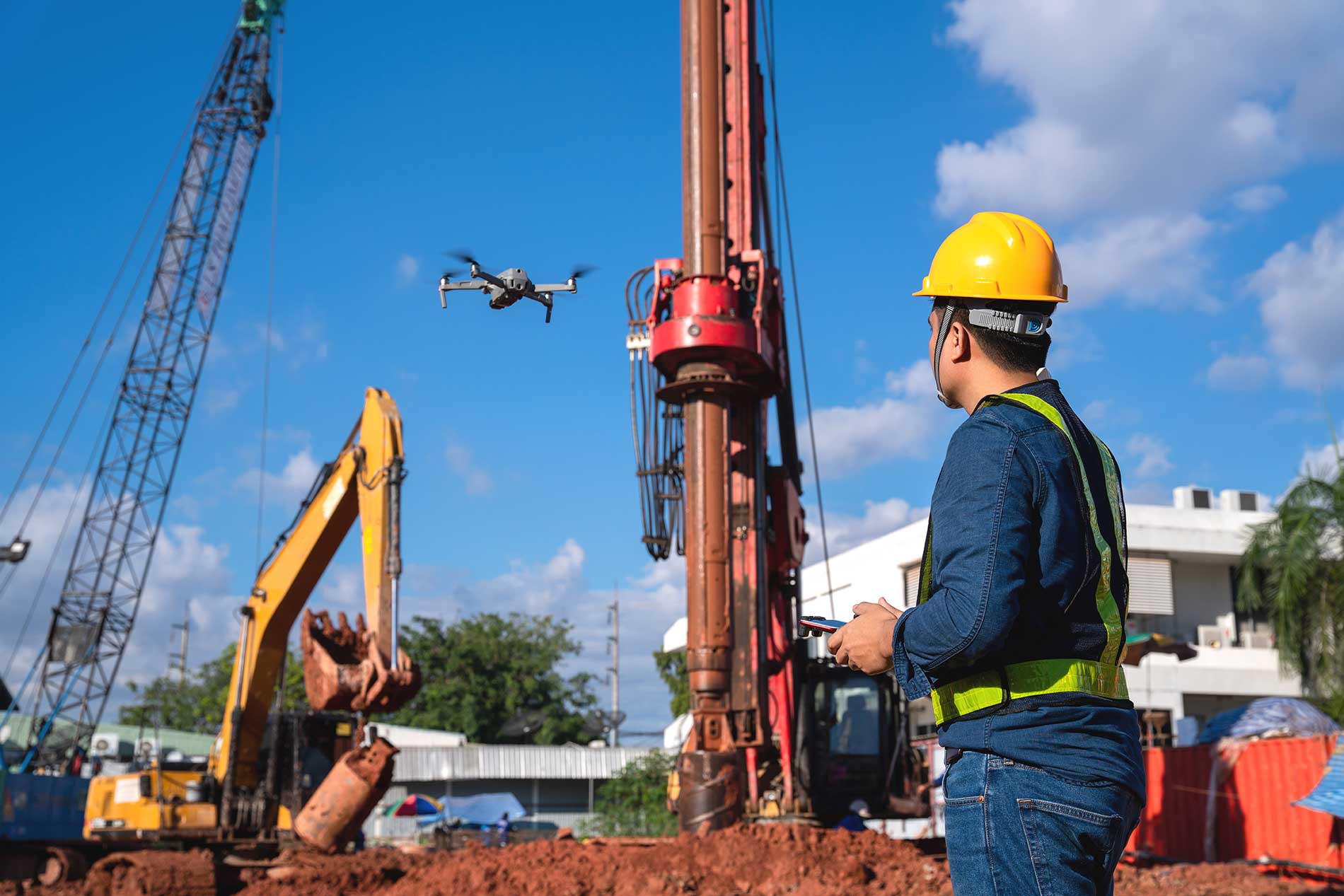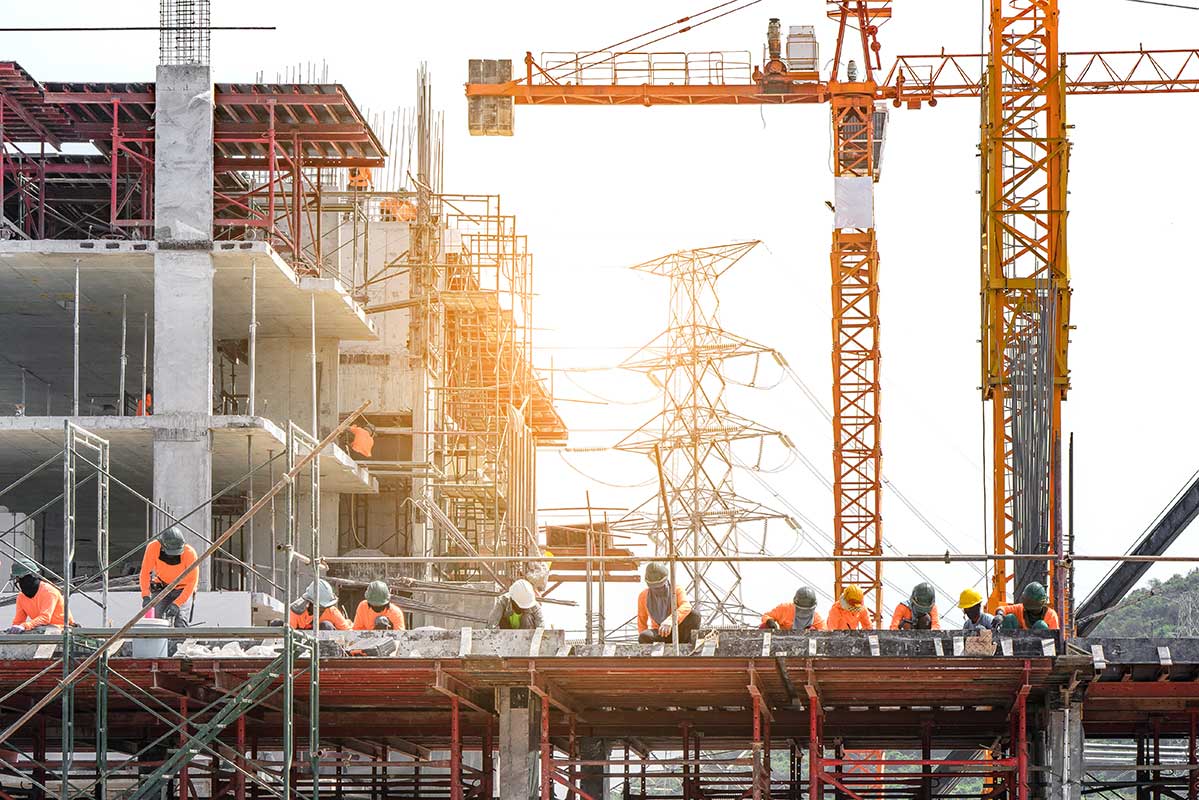Drones, AI, and Beyond
The construction sector, traditionally known for its reliance on manual labor and conventional machinery, is undergoing a transformative shift. Cutting-edge technologies such as drones, artificial intelligence (AI), and automation are not merely enhancing efficiency but are also redefining the very processes that underpin construction. From project planning to on-site execution, these innovations are shaping a future where precision, sustainability, and safety take precedence. In this article, we delve into how these technologies are reshaping construction practices and what lies beyond.
Drones: Revolutionizing Surveying and Monitoring
Drones, or unmanned aerial vehicles (UAVs), have become indispensable tools in the construction sector. Their ability to capture high-resolution images and videos from above has revolutionized site surveying, monitoring, and inspection processes. Traditional land surveys, which could take weeks and require extensive manpower, are now being completed in hours with the help of drones.
For instance, drones equipped with LiDAR (Light Detection and Ranging) technology can generate detailed 3D maps and models of construction sites. This capability is particularly beneficial in large-scale projects such as highways or wind farms, where accuracy and speed are critical. study highlighted by the American Society of Civil Engineers (ASCE) noted that drone surveying has improved efficiency and safety in large civil engineering projects.
Drones also enhance safety by reducing the need for workers to access hazardous areas. Inspections of high-rise buildings, bridges, or confined spaces can be conducted remotely, minimizing the risk of accidents. Furthermore, drones provide real-time data, enabling project managers to make informed decisions and address issues proactively.
Artificial Intelligence: Enhancing Decision-Making and Efficiency
Artificial intelligence is another game-changer for the construction sector. AI-powered software and algorithms are streamlining project planning, cost estimation, and risk management. One of the most significant applications of AI is in Building Information Modeling (BIM), a digital representation of a building’s physical and functional characteristics. AI enhances BIM by predicting potential design flaws and suggesting optimal solutions, thereby reducing rework and delays.
Predictive analytics, fueled by AI, is helping construction companies forecast risks and allocate resources more effectively. For example, AI algorithms can analyze historical data and identify patterns to predict weather disruptions, equipment failures, or supply chain bottlenecks. This predictive capability enables proactive planning, ensuring that projects stay on schedule and within budget.
Moreover, AI is being integrated into autonomous construction equipment, such as excavators and bulldozers. These machines use sensors and AI to operate with minimal human intervention, increasing productivity and precision.
3D Printing: Redefining Construction Techniques
3D printing, or additive manufacturing, is revolutionizing the way structures are built. By depositing material layer by layer, 3D printers can create complex structures with unparalleled precision and minimal waste. This technology is particularly advantageous for producing customized components, intricate designs, or even entire buildings.
The construction of homes using 3D printing is gaining traction worldwide. For example, companies like ICON and Apis Cor have demonstrated the feasibility of 3D-printed homes that are not only cost-effective but also environmentally friendly. A typical 3D-printed house can be constructed in just a few days at a fraction of the cost of traditional methods. These advancements hold promise for addressing housing shortages and disaster recovery efforts.
In addition to housing, 3D printing is being used to create infrastructure components such as bridges and retaining walls. The technology’s ability to use sustainable materials, including recycled concrete and bio-based polymers, aligns with the sector’s push towards greener construction practices.
Robotics: Automating Labor-Intensive Tasks
Robotics is addressing one of the most pressing challenges in the construction sector: labor shortages. Robots are increasingly being deployed to perform repetitive or labor-intensive tasks such as bricklaying, plastering, and welding. Unlike human workers, robots can operate continuously without fatigue, ensuring consistent quality and faster project completion.
For example, the Hadrian X robot, developed by Fastbrick Robotics, can lay up to 1,000 bricks per hour, significantly outpacing human workers. Similarly, robotic arms equipped with AI are being used for tasks like painting and concrete pouring, delivering precise and uniform results.
Robots are also enhancing safety on construction sites. Autonomous robots can transport heavy materials, reducing the risk of injuries caused by manual lifting. Additionally, inspection robots equipped with cameras and sensors can access hard-to-reach areas, identifying structural issues before they escalate into major problems.

Sustainability Through Technology
Sustainability is a growing concern in the construction sector, and technology is playing a pivotal role in addressing this challenge. From energy-efficient designs to waste reduction, innovative tools are enabling greener construction practices.
For instance, smart sensors embedded in buildings can monitor energy consumption and optimize resource use. These sensors provide data that helps in designing energy-efficient HVAC systems and lighting, reducing the building’s carbon footprint. Additionally, AI-driven software can suggest sustainable materials and construction methods based on project requirements.
Prefabrication and modular construction, powered by automation and AI, are also contributing to sustainability. By manufacturing components off-site in controlled environments, these techniques minimize material waste and transportation emissions. study by the World Economic Forum estimates that modular construction can reduce material waste by up to 90% compared to traditional methods.
Beyond the Horizon: Emerging Technologies
While drones, AI, and robotics are already making waves, other emerging technologies promise to take construction innovation to the next level. For example, augmented reality (AR) and virtual reality (VR) are revolutionizing project visualization and stakeholder collaboration. AR allows architects and engineers to overlay digital models onto physical sites, ensuring accurate alignment and design adherence. VR, on the other hand, enables immersive walkthroughs of proposed designs, enhancing client engagement and feedback.
Blockchain technology is another frontier with significant potential. By creating transparent and immutable records, blockchain can streamline procurement processes, enhance contract management, and reduce disputes. Smart contracts—self-executing contracts with predefined conditions—can automate payments and ensure compliance, saving time and resources.
Nanotechnology is also making inroads into the construction sector. Innovations such as self-healing concrete, which uses embedded microcapsules to repair cracks automatically, are extending the lifespan of structures and reducing maintenance costs. Similarly, nano-coatings can enhance the durability and energy efficiency of building materials.
Challenges and Considerations
Despite the benefits, the adoption of advanced technologies in the construction sector is not without challenges. High upfront costs, lack of technical expertise, and resistance to change are significant barriers. Smaller firms, in particular, may struggle to invest in these technologies, widening the gap between large corporations and small businesses.
There is also the issue of cybersecurity. As construction sites become more connected and reliant on digital tools, they become vulnerable to cyber threats. Protecting sensitive data and ensuring the integrity of connected systems will require robust cybersecurity measures.
Moreover, the integration of these technologies necessitates a skilled workforce capable of operating and maintaining advanced tools. This calls for investment in training and education to prepare workers






